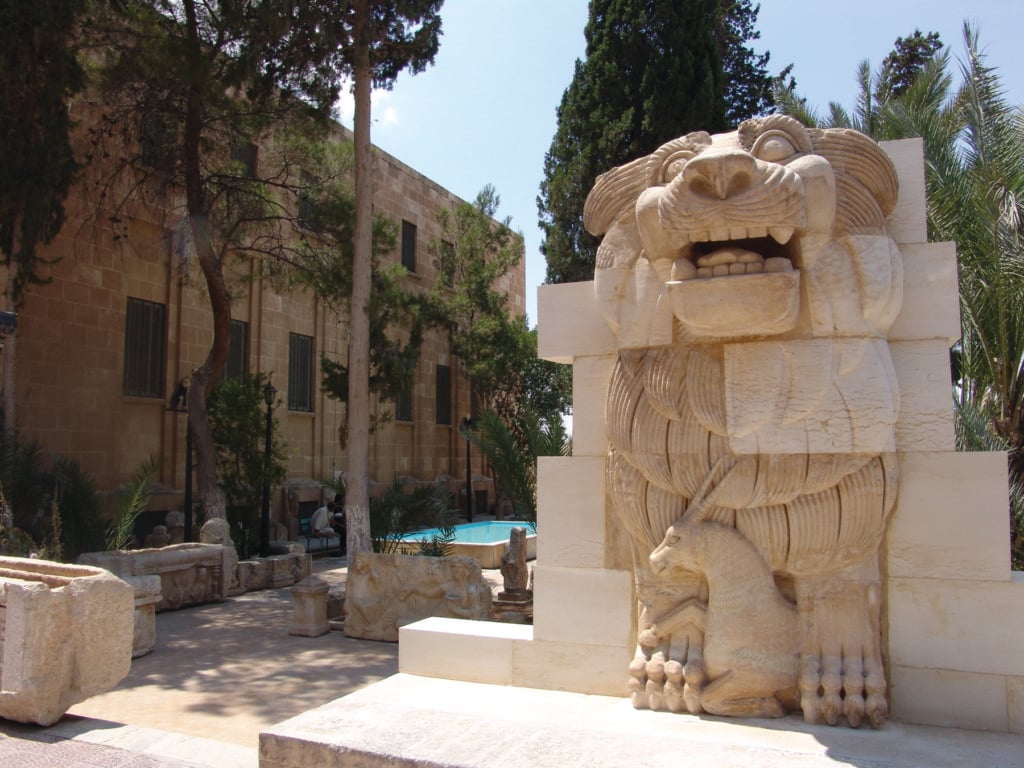Art World
World Museums Join Forces to Combat Destruction of Antiquities in the Age of Digital Reproductions
The Smithsonian Institute and Hermitage as well as the Louvre are among the 19 institutions to sign a declaration of cooperation.

The Smithsonian Institute and Hermitage as well as the Louvre are among the 19 institutions to sign a declaration of cooperation.

Henry Cole, the founding director of London’s Victoria & Albert Museum, issued a convention promoting the reproduction of works of art “for the benefit of museums of all countries,” in 1867. Among the 15 signatories were the Tsesarevich of Russia, crown princes of Denmark and Prussia, prince royals of Italy and Saxony, and assorted dukes, archdukes, and counts. Embracing the technology of his day, Cole advocated the use of plaster casts, electrotypes, and photograms to record and copy artifacts in their collections, and share knowledge across national borders. The decorative art museum’s two courts filled with Victorian-era casts, including Trajan’s Column in Rome, are still among its most impressive spaces.
There were fewer crowned heads around the table at the V&A last week for the launch, on December 8, of a new, updated version of Cole’s declaration. Dubbed ReACH—for the Reproduction of Art and Cultural Heritage—the founding signatories to the declaration represented 19 leading cultural institutions from around the world, among them the Louvre in Paris, the Smithsonian Institution, Amsterdam’s Rijksmuseum and the State Hermitage Museum in St Petersburg. In the spirit of international co-operation, the wording of the declaration was developed through a series of roundtable discussions held over the past year in Paris, Washington DC, St Petersburg, London, Abu Dhabi, and Beijing.
While Cole’s knowledge-sharing imperative remained in place, the world has moved on in the past century and a half. New digital technologies allow non-invasive recording and reproduction of objects either as physical 3-D models or images. But the age-old threats of ageing, conflict, and opportunistic (practical, political, and museological) looting remain. These threats are now joined by the destructive forces of pollution, mass tourism, and acts of iconoclastic terrorists.
A number of recent displays by ReACH’s partner organizations suggest other ways in which museums might meaningfully use reproductions. This fall, the Russian-based tycoon Ziyavudin Magomedov’s Peri Foundation staged what he described as the first exhibition of non-original works in the State Hermitage Museum’s history. Using 3-D scanning and photogrammetry, two photographers trained by the foundation recorded structures and artifacts from the early Islamic Kara-Koreysh settlement in a remote area of Dagestan, a mainly Muslim republic in the North Caucasus where Magomedov was born. The resulting 3-D replicas, made using a variety of techniques, are now on view at the V&A.
“Sites Éternels,” a show last year at the Grand Palais in Paris, offered detailed immersive visualizations of monuments that have been damaged or are under threat, among them Bamiyan in Afghanistan, Khorsabad in Northern Iraq, in Palmyra, the Umayyad Mosque and Krak des Chevaliers in Syria. The multimedia display was pieced together from meticulous drone footage shot on site by ICONEM, an organization dedicated to producing digital records of imperiled sites. Speaking at the V&A, Khalila Hassouna of ICONEM said that “Sites Éternels,” which had no physical exhibits in the traditional sense, received 59,000 visitors in three weeks, almost a quarter of them first time visitors to the Grand Palais.
The field of high-tech reproductions is not without its issues. The distinction between reproduction and fake is but a matter of certification: technical advances will improve the quality of both. Technology is fast evolving: maintaining, updating, and migrating digital records will be an imperative and potentially unwieldy task.
In sharing high-quality images of works freely, museums may also need to let slip priest-like control over the context in which their collections are viewed. Framed reproductions of paintings from the National Gallery of Denmark recently made an unexpected appearance in the Netflix series “Alias Grace.” Extending the ReACH ethos of making world heritage available to the world, the gallery’s response was to update the “Alias Grace” Wikipedia page with information on the paintings and links back to the institution’s site.
The ReACH declaration could signal a fundamental change in museum culture back to the days when casts and copies were valued more highly. Adam Lowe, the director of Factum Arte, which specializes in high-quality facsimiles, argued at the V&A launch for the distinction between the “original” and the “authentic.” In 2007, Factum Arte created a meticulous reproduction of Veronese’s The Wedding Feast at Cana (1563) for the painting’s original home: the refectory in the Church of San Giorgio Maggiore in Venice. Looted by Napoleon’s troops 220 years ago, the original now hangs in the Louvre in Paris. While the original is now regularly obscured by hoards of tourists taking selfies with the Mona Lisa, Lowe suggests the copy at San Giorgio Maggiore might perhaps deliver a more authentic experience of the work.